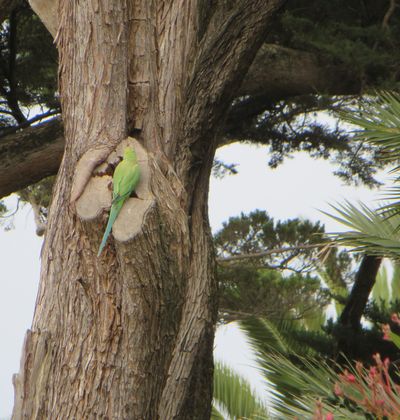LISBON’S GARDENS:
There are several public gardens in Lisbon and the Estoril Coast. Lisbon’s gardens are located in various areas of the city. They provide restful areas to contemplate the scenery. Kiosks serving drinks and snacks are located in some of the gardens. Various species of trees, some quite old, grow in these parks. Above photo Estoril gardens in front of the Casino.
Outside the Jeronimos Monastery in Belém and the Edward VII Park in central Lisbon are two of the large parks. The Edward VII Park was named after a visit to Lisboa by King Edward VII in 1903. It was at the time of mayor Rosa Araújo.
Botanical Garden of Ajuda – Jardim Botânico da Ajuda

The Botanical Garden of Ajuda (Jardim Botânico da Ajuda) is located in the Calçada da Ajuda. It is a short downhill walk from the huge Ajuda Palace and the adjacent Museum of Royal Treasure (Museu do Tesouro Real). In the 15th century sailors left from here to discover the world. They returned from their voyages with exotic plants and trees. This became the ideal location for the garden, built by King José I in 1768, just after the 1755 earthquake. Imported species were the Casuavine Torlosa Aiton and Grevilea from Australia. The Phytolacca Dioica came from South America. The Ulmaceau from Japan.

From the Canaries came the Dracaena Draco (dragon tree), more than 200 years old. The Dragon tree above is propped up with a metallic structure.

There are benches where you can relax or just enjoy the view of the River Tagus in the distance although as at May 2025 the gardens are in need of some TLC! The Jardim Botânico da Ajuda is open from 10am to 5pm.
The Estufa Fria and Estufa Quente – Cold and Hot Greenhouses
The Estufa Fria (Cold Greenhouse) is at the end of the Parque Eduardo VII. Built in an abandoned quarry in the early 19th century it had several alterations from 1910 onwards. It opened in 1933. This greenhouse has slats to allow air to freely circulate protecting it from rain and sun. Water flows from small streams providing perfect conditions for growing species from Europe, India, China, Africa and Australia. There are different levels with stepping stones, cascading streams and fish ponds.
The Estufa Quente (Hot Greenhouse) is within the Estufa Fria grounds. Here you will see tropical plants, a Cactus Garden and waterfalls. A smiling Venus greets you from a clearing. Ferns, lotus flowers, agapanthus and azaleas are just some of the many species from South Africa, Japan and South America. Palm trees were imported from Lord Howe Island.
The Estufa Fria is open from 9am to 5pm in the winter and 10am to 7pm in the Summer.
Estrela Gardens and Botanical Garden
The Estrela Gardens (Jardim Guerra Junqueiro) are located in the Estrela. Opposite the gardens is the Estrela Basilica built in 1842. A playground for children is located in one corner. One of the serene parks of the city to enjoy a drink at the snackbar. The park is open from 7am.
The Jardim Botânico (Botanical Garden) is in the Rua Escola Politécnica, 58. With an area of four hectares it is rich in gymnosperms and palm trees. You walk through the University of Lisboa to reach it. Species in this garden come from Mexico, Equador, Peru, Bolivia, Zimbabwe, South Africa. Pines, bamboo trees and the dragontree are just some of them. The Botanical Garden is open from 9am to 5pm.

In the Parque das Nações you will find the Garcia da Orta Gardens and the Jardim d’Água (Water Garden). There are seating areas and benches along the riverside.
ESTORIL COAST GARDENS:

In CASCAIS the Gandarinha Garden (known as Parque Marechal Carmona Garden), next to the Cascais Marina, has a café.
The Parque Palmela, below, was once the venue for the open air Estoril Jazz festivals and other concerts.

In the Lisbon and Estoril gardens there are quoisques or cafes providing drinks and snacks.

The above green parrots can be seen flying in the gardens in front of of the Estoril Casino.
By Pat Rodrigues

